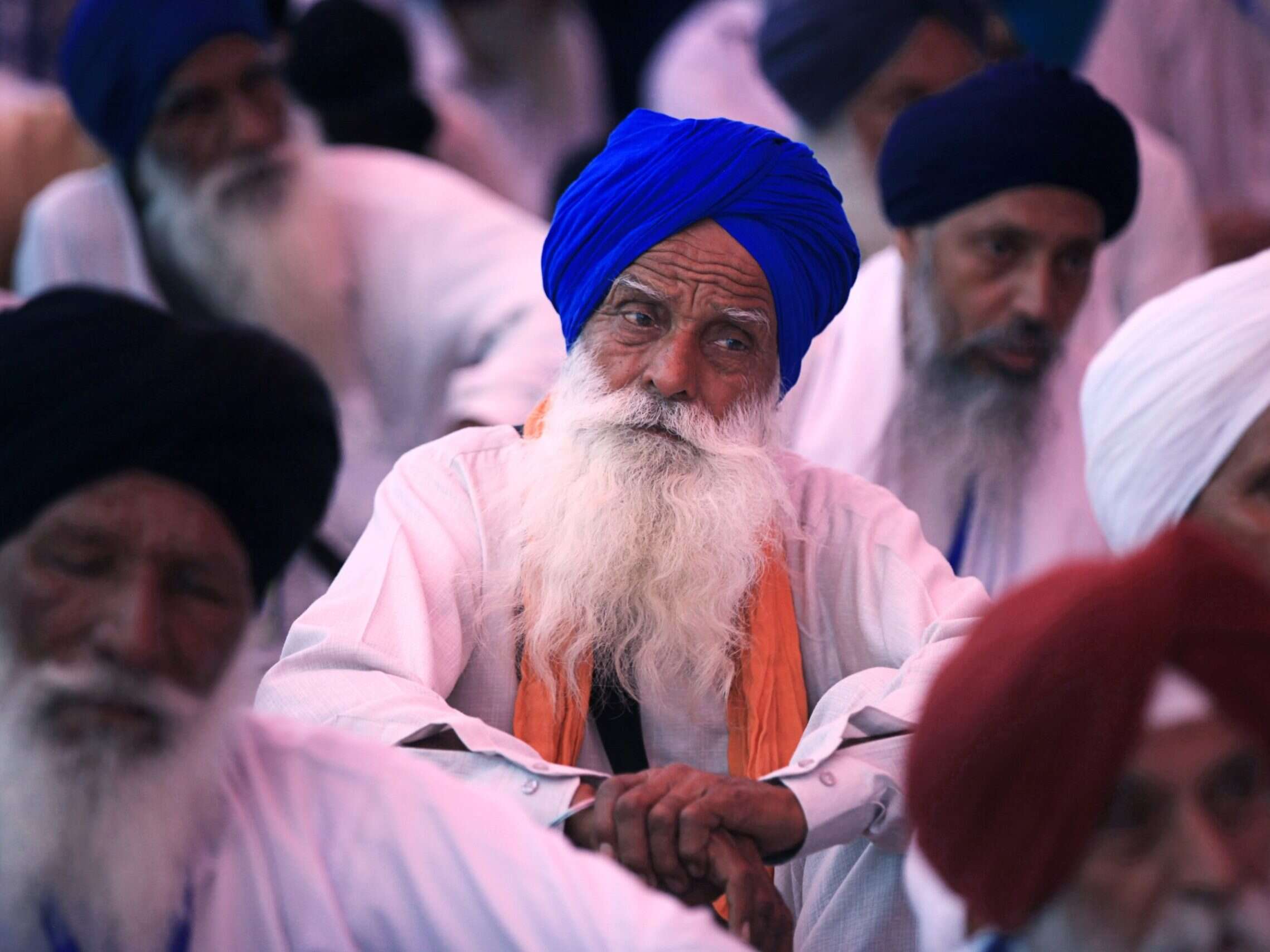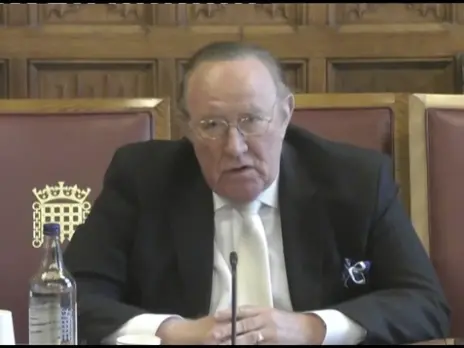
The issue of Islamophobia and “mistaken identity” has been impacted by the definition of sexual grooming gangs by the media as “Asian”.
In Britain, all South Asians – those with parents or grandparents from India, Pakistan, Bangladesh or Sri Lanka – are considered part of the “Asian” umbrella.
Use of this vague terminology in the media does nothing to promote cultural or religious literacy amongst the public, or to encourage the understanding of differences between Muslims, Hindus, Sikhs and others.
In December 2018, a man was fined £180 by a court in Nottinghamshire for calling an Indian Sikh man a “Muslim paedo”.
This incident serves to illustrate how Britain’s sexual grooming gang phenomenon has resulted in prejudice against Muslims, and those perceived to be Muslims – or the “Muslim-looking other”.
The Times’ chief investigative reporter Andrew Norfolk, who investigates child sexual exploitation, told the authors: “We kept using the headline ‘Asian’ in those early days, but every time we did this, we got complaints from Hindus and Sikhs, and from my perspective this was a valid complaint.
“There was the odd white person, Hindu, or the odd individual Sikh involved in the gangs, but they were overwhelmingly Pakistani men, or Bangladeshi or Kurdish men, often involving families – uncles and nephews.”
Norfolk said The Times increasingly focused on the specificity of the perpetrators (supported by statistics) from around January 2011, and things then became problematic.
He said: “From the word go, the same coalition of Islamist groups and the left, were both screaming ‘Islamophobia’ and ‘racist’, when what we were highlighting was a clear trend in criminality.
“It was difficult for the first few months. I got to my forties without ever being accused of being racist. I’m pleased we kept going, despite the denial from police and social services.
“Rotherham changed things, after a year of writing countless stuff – they launched an independent inquiry.”
Norfolk said a Sikh family from the West Midlands had contacted him following concerns for their daughter, but he said “honour issues” often made it harder for Sikh girls to speak out, and for decades no one wanted to listen to white working-class girls either.
What was clear from these discussions was that whilst one should continue to discuss genuine cases of hate crime, one must remain cognisant of illiberal efforts to accuse individuals raising important issues with the false and malicious charge of “racist” or “Islamophobe”.
Media representation
Whilst it was clear that the focus on anti-Sikh hate was thin on the ground in the political sphere, amongst prominent race relations think tanks and academia, it was even more so in the mainstream media.
This despite the presence of high-profile Sikh born journalists – the likes of the BBC’s Anita Rani, Sathnam Sanghera of The Times and Hardeep Singh Kohli, to name but a few.
There was ignorance amongst journalists about the suffering of non-Muslims (such as Sikhs) from Islamophobia in the first instance, but even when it was known, Sikh stories were subsumed within the broader Islamophobia debate in media reports.
To highlight this, the authors looked at stories in the media from both the UK and US around the theme of religious literacy, because religious illiteracy can fuel hate crime.
They also looked for examples of where images resembling Sikhs have been used inappropriately to talk about anti-Muslim hate, without even acknowledging Sikhs.
The Guardian best illustrates the latter on 16 August 2016 with the incorrect use of an image resembling a Sikh turban used to illustrate an article titled, “The perils of ‘flying while Muslim’.”
This misplaced artwork was picked up on by an observant Kate Mansey, the deputy features editor at The Mail on Sunday.
Mansey told the authors: “When I spotted the story in The Guardian, I thought it was brilliantly written and very informative. Sometimes, however, the captions and artwork that accompany stories are not subjected to such rigorous checks.
“It struck me as odd that a passenger with a Sikh turban was used to depict a story about Muslims. I took to Twitter to express my surprise. For me, this was another example of how those of the Sikh faith are often confused with Muslims.
“No doubt, it is a source of annoyance for Sikh people, but it also shows a wider misunderstanding of religion in our society. The point of the article in The Guardian was that, of course, we should not prejudice all Muslims by assuming they are terrorists. Indeed. But nor should we assume all people with darker skin are Muslims.
“The key, surely, to building a more tolerant society is to educate children – and adults – about different religions. Perhaps no surprise then that this was one of my most widely shared and liked tweets.”
After complaints and retweets of Mansey’s original tweet, the image was subsequently removed from the top of the article, being replaced lower down under a paragraph discussing the SC’s app (FlyRights) to highlight and report discrimination whilst flying.
The image description however remained “wear appropriate clothing”, with no clarification around its resemblance to a Sikh turban.
This was one of the rare occasions where a member of a national newspaper’s editorial team advocated on social media on behalf of British Sikhs, and, at least on this occasion, made a difference.
Whilst national media demonstrated religious illiteracy, so did local media.
In the Slough Express, a Sikh family who had become victims of hate crime in the aftermath of the 7/7 London bombings were ignorantly described as Muslim in an article titled, “Neighbour accused of race hate threats to kill family.”
Religion in the media
When religion is discussed, questions about accuracy in reporting are evident, and increasingly an issue, especially when it comes to Islam, but also Sikhism.
In 2015, press regulator the Independent Press Standards Organisation received 12,278 enquiries and complaints, increasing to 14,455 in 2016.
Although the authors must be careful not to extrapolate too much from this dataset, another useful indicator of a disproportionate media focus on Islam is the number of complaints about reporting on the Muslim community adjudicated by IPSO to final published resolution.
Between 2016 and 2018 there were approximately 23 such cases adjudicated by IPSO that reached a final decision, of which seven constituted a breach of the editor’s code.
Whilst inaccurate coverage of the Muslim community has been clearly observed and corrections made, during the same period there were no final decisions or published resolutions on complaints related to coverage of the Sikh community.
According to IPSO, they may well have received Sikh related complaints, but they did not reach the stage of a final decision, and were thus not published on their website.
This may have been because complaints were rejected as third-party complaints (complaints by people not affected by the article concerned) or because they were complaints against publications which IPSO does not regulate and are thus considered outside its remit.
However, IPSO told the authors they were aware of complaints related to use of the word “Asian” (it is not clear if this was related to descriptions of those convicted in sexual grooming cases), and these complaints not necessarily being from Sikhs or Hindus.
It is clear however, that the Muslim community regularly engages with the media, and IPSO, to correct any perceived inaccuracies and potential breaches of the Editor’s Code.
The media has an important role in helping improve levels of religious literacy for all faiths, and therefore they must continue to be held accountable for misleading or inaccurate coverage.
The Muslim community has taken a lead here. Journalists not covering religion as a speciality would also benefit from accurate religious coverage by colleagues.
This is the reason that both the government’s Anti-Muslim Hatred Working Group and projects flowing from Action Against Hate (2016) chose to specifically work on “Muslim literacy in the media”, and to collaborate with IPSO to devise training for journalists “for a better understanding of Islam” respectively.
This is also why Bolton MP Yasmin Qureshi launched the APPG for Religion in the Media in 2016. Its raison d’être is stated as being: “To foster a better understanding and representation of religion in the media as religion is a prime motivator of individuals and the community.”
Also, to aim for a seventh public purpose for the BBC in charter renewal, namely to promote religious literacy.
Again, Sikhs did not have government assistance in framing or delivering structured projects in this critical area, so organizations like the Network of Sikh Organisations took their own initiative to develop a “journalists’ guide to Sikhism” with IPSO, published in spring 2019.
The above is taken from Racialisation, Islamophobia and Mistaken Identity: The Sikh Experience by Jagbir Jhutti-Johal and Hardeep Singh.
Picture: Reuters/Mohsin Raza
Email pged@pressgazette.co.uk to point out mistakes, provide story tips or send in a letter for publication on our "Letters Page" blog






